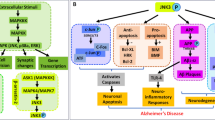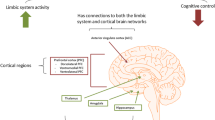Abstract
The endogenous cannabinoid anandamide is an agonist of the cannabinoid receptors CB1 and CB2, as well as transient receptor potential vanilloid type 1 and type 4 ion channels. In recent years, there has been a great deal of interest in the cellular processes regulating the signaling of endocannabinoids such as anandamide. This is due largely to evidence that augmentation of cannabinergic tone might be therapeutically beneficial in the treatment of multiple disease states such as chronic pain, anxiety, multiple sclerosis, and neuropsychiatric disorders. Of particular interest are the cellular processes that regulate the cellular accumulation and metabolism of anandamide. Characterization of the process by which anandamide is internalized and metabolized by the cell may identify drug targets useful in the positive modulation of cannabinergic tone. Recently, we reported that detergent-resistant membrane microdomains known as lipid rafts play a role in the cellular accumulation of anandamide by mediating an endocytic process responsible for anandamide internalization. The enzyme primarily responsible for anandamide metabolism, fatty acid amide hydrolase, is excluded from lipid rafts. However, the metabolites of anandamide accumulate in these detergentresistant membrane microdomains. There is some preliminary evidence that makes it reasonable to propose that anandamide metabolites enriched in lipid rafts may act as precursors to anadamide synthesis. Overall, experimental evidence is mounting that detergent-resistant membrane microdomains such as lipid rafts may play a role in the cellular regulation of anandamide inactivation and production.
Similar content being viewed by others
References
Howlett AC. Pharmacology of cannabinoid receptors.Annu Rev Pharmacol Toxicol. 1995;35:607–634.
Di Marzo V. ‘Endocannabinoids’ and other fatty acid derivatives with cannabimimetic properties; biochemistry and possible physiopathological relevance.Biochim Biophys Acta. 1998;1392:153–175.
Porter AC, Felder CC. The endocannabinoid nervous system: unique opportunities for therapeutic intervention.Pharmacol Ther. 2001;90:45–60.
Devane WA, Hanus L, Breuer A, et al. Isolation and structure of a brain constituent that binds to the cannabinoid receptor.Science. 1992;258:1946–1949.
Sugiura T, Kondo S, Sukagawa A, et al. 2-Arachidonoylglycerol: a possible endogenous cannabinoid receptor ligand in brain.Biochem Biophys Res Commun. 1995;215:89–97.
Hanus L, Abu-Lafi S, Fride E, et al. 2-arachidonyl glyceryl ether, an endogenous agonist of the cannabinoid CB1 receptor.Proc Natl Acad Sci USA. 2001;98:3662–3665.
Porter AC, Sauer JM, Knierman MD, et al. Characterization of a novel endocannabinoid, virodhamine, with antagonist activity at the CB1 receptor.J Pharmacol Exp Ther. 2003;301:1020–1024.
McVey DC, Schmid PC, Schmid HH, Vigna SR. Endocannabinoids induce ileitis in rats via the capsaicin receptor (VR1).J Pharmacol Exp Ther. 2003;304:713–722.
Nilius B, Vriens J, Prenen J, Droogmans G, Voets T. TRPV4 calcium entry channel: a paradigm for gating diversity.Am J Physiol Cell Physiol. 2004;286:C195-C205.
Ueda N, Yamamoto S. Anandamide amidohydrolase (fatty acid amide hydrolase).Prostaglandins Other Lipid Mediat. 2000;61:19–28.
Dinh TP, Carpenter D, Leslie FM, et al. Brain monoglyceride lipase participating in endocannabinoid inactivation.Proc Natl Acad Sci USA. 2002;99:10819–10824.
Dinh TP, Freund TF, Piomelli D. A role for monoglyceride lipase in 2-arachidonoylglycerol inactivation.Chem Phys Lipids. 2002;121:149–158.
Jarrhian A, Watts VJ, Barker EL. D2 dopamine receptors modulate Galpha-subunit coupling of the CB1 cannabinoid receptor.J Pharmacol Exp Ther. 2004;308:880–886.
Beltramo M, de Fonseca FR, Navarro M, et al. Reversal of dopamine D(2) receptor responses by an anandamide transport inhibitor.J Neurosci. 2000;20:3401–3407.
Cravatt BF, Demarest K, Patricelli MP, et al. Supersensitivity to anandamide and enhanced endogenous cannabinoid signaling in mice lacking fatty acid amide hydrolase.Proc Natl Acad Sci USA. 2001;98:9371–9376.
de Lago E, Ligresti A, Ortar G, et al. In vivo pharmacological actions of two novel inhibitors of anandamide cellular uptake.Eur J Pharmacol. 2004;484:249–257.
Lopez-Rodriguez ML, Viso A, Ortega-Gutierrez S, et al. Design, synthesis and biological evaluation of new endocannabinoid transporter inhibitors.Eur J Med Chem. 2003;38:403–412.
Kathuria S, Gaetani S, Fegley D, et al. Modulation of anxiety through blockade of anandamide hydrolysis.Nat Med. 2003;9:76–81.
Ruiz-Llorente L, Ortega-Gutierrez S, Viso A, et al. Characterization of an anandamide degradation system in prostate epithelial PC-3 cells: synthesis of new transporter inhibitors as tools for this study.Br J Pharmacol 2004;141:457–467.
Brown DA, London E Structure and function of sphingolipid- and cholesterol-rich membrane rafts.J Biol Chem. 2000;275:17221–17224.
Pike LJ, Han X, Chung KN, Gross RW. Lipid rafts are enriched in arachidonic acid and plasmenylethanolamine and their composition is independent of caveolin-1 expression: a quantitative electrospray ionization/mass spectrometric analysis.Biochemistry. 2002;41:2075–2088.
London E, Brown DA. Insolubility of lipids in triton X-100: physical origin and relationship to sphingolipid/cholesterol membrane domains (rafts).Biochim Biophys Acta. 2000;1508:182–195.
Razani B, Woodman SE, Lisanti MP. Caveolae: from cell bioloty to animal physiology.Pharmacol Rev. 2002;54:431–467.
McFarland MJ, Barker EL. Lipid rafts: a nexus for endocannabinoid signaling?Life Sci. 2005;77:1640–1650.
McFarland MJ, Porter AC, Rakhshan FR, Rawat DS, Gibbs RA, Barker EL. A role for caveolae/lipid rafts in the uptake and recycling of the endogenous cannabinoid anandamide.J Biol Chem. 2004;279:41991–41997.
Sarker KP, Maruyama I. Anandamide induces cell death independently of cannabinoid receptors or vanilloid receptor 1: possible involvement of lipid rafts.Cell Mol Life Sci. 2003;60:1200–1208.
Bari M, Battista N, Fezza F, Finazzi-Agro A, Maccarrone M. Lipid rafts control signaling of type-1 cannabinoid receptors in neuronal cells: implications for anandamide-induced apoptosis.J Biol Chem. 2005;280:12212–12220.
Beltramo M, Stella N, Calignano A, Lin SY, Makriyannis A, Piomelli D. Functional role of high-affinity anandamide transport, as revealed by selective inhibition.Science. 1997;277:1094–1097.
Di Marzo V, Fontana A, Cadas H, et al. Formation and inactivation of endogenous cannabinoid anandamide in central neurons.Nature. 1994;372:686–691.
Hillard CJ, Edgemond WS, Jarrahian A, Campbell WB. Accumulation of N-arachidonoylethanolamine (anandamide) into cerebellar granule cells occurs via facilitated diffusion.J Neurochem. 1997;69:631–638.
Maccarrone M, van der Stelt M, Rossi A, Veldink GA, Vliegenthart JF, Agro AF. Anandamide hydrolysis by human cells in culture and brain.J Biol Chem. 1998;273:32332–32339.
Rakhshan F, Day TA, Blakely RD, Barker EL. Carrier-mediated uptake of the endogenous cannabinoid anandamide in RBL-2H3 cells.J Pharmacol Exp Ther. 2000;292:960–967.
Glaser ST, Abumrad NA, Fatade F, Kaczocha M, Studholme KM, Deutsch DG. Evidence against the presence of an anandamide transporter.Proc Natl Acad Sci USA. 2003;100:4269–4274.
Ligresti A, Morera E, Van Der Stelt M, et al. Further evidence for the existence of a specific process for the membrane transport of anandamide.Biochem J. 2004;380:265–272.
Ortar G, Ligresti A, De Petrocellis L, Moreara E, Di Marzo V. Novel selective and metabolically stable inhibitors of anandamide cellular uptake.Biochem Pharmacol. 2003;65:1473–1481.
Hillard CJ, Jarrahian A. Cellular accumulation of anandamide: consensus and controversy.Br J Pharmacol. 2003;140:802–808.
Ortega-Gutierrez S, Hawkins EG, Viso A, Lopez-Rodriguez ML, Cravatt BF. Comparison of anandamide transport in FAAH wild-type and knockout neurons: evidence for contributions by both FAAH and the CB1 receptor to anandamide uptake.Biochemistry. 2004;43:8184–8190.
McFarland MJ, Porter AC, Rakhshan FR, Rawat DS, Gibbs RA, Barker EL. A role for caveolae/lipid rafts in the uptake and recycling of the endogenous cannabinoid anandamide.J Biol Chem. 2004;279:41991–41997.
Muthian S, Nithipatikom K, Campbell WB, Hillard CJ. Synthesis and characterization of a fluorescent substrate for the N-arachidonoylethanolamine (anandamide) transmembrane carrier.J Pharmacol Exp Ther. 2000;293:289–295.
Bari M, Paradisi A, Pasquariello N, Maccarrone M. Cholesterol-dependent modulation of type 1 cannabinoid receptors in nerve cells.J Neurosci Res. 2005;81:275–283.
Sandberg A, Fowler CJ. Measurement of saturable and nonsaturable components of anandamide uptake into P19 embryonic carcinoma cells in the presence of fatty acid-free bovine serum albumin.Chem Phys Lipids. 2005;134:131–139.
Egertova M, Giang DK, Cravatt BF, Elphick MR. A new perspective on cannabinoid signalling: complementary localization of fatty acid amide hydrolase and the CB1 receptor in rat brain.Proc Biol Sci. 1998;265:2081–2085.
Cravatt BF, Giang DK, Mayfield SP, Boger DL, Lerner RA, Gilula NB. Molecular characterization of an enzyme that degrades neuromodulatory fatty-acid amides.Nature. 1996;384:83–87.
Giang DK, Cravatt BF. Molecular characterization of human and mouse fatty acid amide hydrolases.Proc Natl Acad Sci USA. 1997;94:2238–2242.
Day TA, Rakhshan F, Deutsch DG, Barker EL. Role of fatty acid amide hydrolase in the transport of the endogenous cannabinoid anandamide.Mol Pharmacol. 2001;59:1369–1375.
Cadas H, di Tomaso E, Piomelli D. Occurrence and biosynthesis of endogenous cannabinoid precursor, N-arachidonoyl phosphatidylethanolamine, in rat brain.J Neurosci. 1997;17:1226–1242.
Okamoto Y, Morishita J, Tsuboi K, Tonai T, Ueda N. Molecular characterization of a phospholipase D generating anandamide and its congeners.J Biol Chem. 2004;279:5298–5305.
Czarny M, Lavie Y, Fiucci G, Liscovitch M. Localization of phospholipase D in detergent-insoluble, caveolin-rich membrane domains: modulation by caveolin-1 expression and caveolin-182-101.J Biol Chem. 199;274:2717–2724.
Dobrowsky RT. Sphingolipid signalling domains floating on rafts or buried in caves?Cell Signal. 2000;12:81–90.
Author information
Authors and Affiliations
Corresponding author
Rights and permissions
About this article
Cite this article
McFarland, M.J., Terebova, E.A. & Barker, E.L. Detergent-resistant membrane microdomains in the disposition of the lipid signaling molecule anandamide. AAPS J 8, 11 (2006). https://doi.org/10.1208/aapsj080111
Received:
Accepted:
Published:
DOI: https://doi.org/10.1208/aapsj080111




